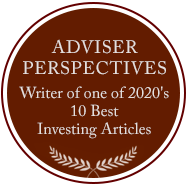
Categories
Resource Links
 GIR's Investing in the New Europe
GIR's Investing in the New EuropeBloomberg Press, 2001, "Sound, practical advice."
Wall Street Journal Europe
MANAGING FUNDS OF FUND RISKS
October 2009, Absolute Return
Last year, the average fund of funds got walloped even worse than the average hedge fund, losing 55 basis points more than the average individual fund, which lost 21.63 percent, according to the industry tracker BarclayHedge. The promise of greater security from judiciously melding funds into a greater composite seemed as specious as the notion that hedge funds are a source of absolute returns, with investors suffering the added insult of an extra layer of expense.
One of the biggest problems many fund of funds managers discovered was that they were exposed to far greater concentration risk than they had previously imagined. This occurred for several reasons. Many managers were unable or failed to adequately aggregate their total portfolio exposure that would reveal overlapping positions held across many funds. Many failed to discern the correlation among specific investments and industry positions that also tracked near-identical performance. And then the collapse of liquidity and the rush to sell produced correlated returns among different strategies and asset classes where formally there weren’t any.
Ron Papanek, head of business strategy at RiskMetrics, a leading hedge fund aggregator of portfolio-level data, says that “last year demonstrated more clearly than ever the need for fund of funds managers to have a clear understanding of concentration and the risks associated with their composite portfolios. At the same time, hedge fund managers are increasingly aware of the need of making their portfolios trade transparent.”
Contrary to what one might suppose, integrating various, supposedly well managed individual portfolios can produce a risk profile that is quite different than those of the underlying portfolios. Accordingly, this calls for much of the same analysis
reported in last month’s Absolute Return article on hedge fund risk [“Putting VaR in its Place,” October 2009], including stress testing, liquidity assessment, and historical and conditional VaR runs.
In late 2008, Kristoffer Houlihan, Director of Risk Management at the Pacific Alternative Asset Management company [PAAMCO], a fund of funds manager with $9 billion in assets, recalls that performance of one of the portfolios in the firm’s Opportunistic Fund, was correlating unexpectedly close with commodities.
PAAMCO’s internal analysis along with work performed by RiskMetrics revealed that one-third of this underlying fund’s exposure was in basic material and energy-related stocks, which were closely tracking commodity prices. Because the firm feared commodities were in a deflationary trend, Houlihan decided to short a commodity ETF, matching the long commodity exposure of the underlying fund. After several months, when the risk of commodity deflation had subsided, he removed the hedge and realized a net positive gain.1
Papanek adds that “the value of knowing what’s in portfolios is not only in having a better handle on your funds’ investments and risks, but in enabling on-going due diligence in three critical ways. It allows fund of funds managers to actually corroborate performance by reconciling portfolio content with returns. It confirms assets in the portfolio. And it helps detect strategy drift.”
Before signing up with RiskMetrics in February of this year, EIM, a $9 billion global manager that customizes fund of fund programs for over 100 institutional investors, was concerned that the amount of cash underlying managers were claiming was unencumbered was inaccurate. So, using portfolio-level data, EIM reconstructed the balance sheets of a number of funds, matching assets and liabilities and theoretical margin requirements. Paulo Peres, the firm’s Director of Risk Management, found that in several instances, claims of unencumbered cash was significantly overstated. This directly led to the redemption out of two funds.2
RiskMetrics has portfolio level data on more than 250 individual fund managers and over 300 funds worth close to $1 trillion. And the firm is adding a dozen managers every month to its Hedge Platform Community.
However, PAAMCO’s Houlihan didn’t need RiskMetrics to provide access to trade data. It only invests in funds that agree to supply such information to PAAMCO in the first place. “We can’t accurately determine various possible portfolio risks without this level of transparency,” says Houlihan. He then sends the portfolio data encrypted to RiskMetrics, to protect the confidentiality of each one of his underlying funds, enabling the aggregator to subsequently crunch the data and generate a wide variety of portfolio metrics, including concentration by industry, sector, country and regional, and asset class, and related risks.
At the same time, PAAMCO uses an array of its own a proprietary tools to monitor underlying manager behavior, such as style drift, investing timing in equities, and investment correlations. For debt, he’ll see if an interest rate risk is adequate in relation to duration. And for credit derivatives, he assesses spread durations to discern if the market is providing enough compensation for risk.
Other fund of funds, however, do work with low levels of underlying portfolio transparency. But it doesn’t mean that they aren’t able to discern and respond to risk.
Mark Kulpins, Head of Porfolio Research at Mesirow Advanced Strategies, which manages 15 fund of funds worth more than $11 billion, doesn’t appear to be on the cutting edge of risk management. The firm doesn’t have a designated Risk Manager or a risk specific oversight committee. Only 30 percent of the 65 managers in which Mesirow invests provide trade-level data. And the firm relies largely on commingled accounts.
Mesirow manages risk, says Kulpins, inherently throughout the investment process. Each considered strategy is tracked by a working group made up of three teams responsible for evaluating managers on the basis of qualitative, quantitative, and operational due diligence. Each team then reports its findings to the Investment Committee. “The inherent diversity of each fund then blended together with other funds provides us with a high degree of confidence in our management of risk,” Kulpins explains.
The results, according to investor letters, seem to bear this out. Last year, Mesirow’s multi-strategy fund significantly outperformed the industry average, losing 15 percent. And this year through September, it’s up 13 percent, outpacing the average fund of funds return by 4.25 percent.
The firm makes up deficiencies in portfolio visibility by rifling through public documents, including 13-Fs that reveal long equity positions, and through various types of sensitivity analysis, performed inhouse and externally by a data aggregator. Mesirow uses MeasureRisk, who enhances transparency by studying gross long and short exposure; momentum, leverage, sector and market capitalization characteristics; beta and correlation to market and custom benchmarks; and average credit grades. For options-oriented strategies, such as relative value, he receives data that informs the price and volatility sensitivity of derivatives compared to their underlying assets.
In early 2007, as credit spreads were being compressed to virtually undifferentiated levels, Mesirow was concerned that some of its credit managers were taking on more risk than with which it was comfortable. “Net exposure was too directionally long given how tight spreads had become,” recalls Kulpins, “especially in the high-yield, distressed sectors, and we felt there would be a sell-off that would send prices lower.”
Through his own analysis and that provided by MeasureRisk, Kulpins found that 20-30% of his multi-strategy products was exposed to credit managers who had extensive high-yield, distressed debt exposure. In the end, he decided to hire several additional managers who focused on shorting high-yield and distressed debt to partially counter this overall long risk.
As a direct result of last year’s meltdown, operational standards are changing across the fund of funds industry. According to EIM’s Peres, 2008 taught his firm five key lessons. Transparency is a must. [Over the past year, the percent of the firm’s underlying funds providing trade-level has jumped from 50 percent to 90 percent.] Independent and full-service third-party administrators are essential to ensure accurate pricing and trade information. A fund should not engage in trading, borrowing or lending with any broker-dealer that is a related entity. There needs to be independent custody to ensure legitimacy of assets. And EIM will not invest in funds which in turn invest in other funds that do not permit unrestricted due diligence of its operations and records.
But understanding portfolio risks facing fund of funds, especially involving concentration, comes down to thoroughly aggregating its entire holdings. Using a third-party specialist helps. But its findings too must be monitored.
Last fall, PAAMCO discovered that its bank loan exposure—which represented about 20 percent of its portfolio—was not adequately being tracked by RiskMetrics because its program was automatically dropping out loans that were trading distressed, below 85-90. As a result, the spread curve RiskMetrics was generating [the difference between bank loan yields and 3-month US LIBOR rates] seemed very low, affecting PAAMCO’s assessment of risk.
As it turned out, according to PAAMCO’s Houlihan, some bank loans were trading as low as 67 for a time, which, if incorporated into the analysis, would’ve pushed up the spread curve. So he ended up supplying RiskMetrics with current prices. This enabled him to better discern an important part of his portfolio risk.
Ultimately, there was no harm done as distressed bank loans did rally. RiskMetrics did rectify the issue of bank loan pricing and inclusion. “But it shows the need for managers to be fully involved in the entire risk assessment process,” observes Houlihan.
SIDEBAR: UBP AND MAN
The giant funds of funds Man Investments, with $45 billion in assets under management, has been struggling of late. But the reasons why its flagship Man Glenwood Mutlistrategy Fund of Funds, which seeks to combine differentiated returns from its individual investments, lost 18 percent last year remain unclear.
The firm’s Chief Investment officer, John Roswell, attributes much of the losses to the liquidity shock that hit after Lehman failed last September, when markets seized up, lending virtually halted, which hit debt instruments, especially convertible bonds, very badly. Because he invests in very large funds, they were unable to maneuver out of the way of sudden shocks that overwhelmed the markets. However, he wasn’t able to explain why the firm’s risk controls hadn’t better anticipated deteriorating market conditions.
Roswell says the firm’s definition of risk hasn’t changed. But it is more focused on issues of liquidity and avoidance of specific investment concentration that comes about when managers jump on the same ideas.
The fund is moving toward greater use of managed accounts. By avoiding commingled funds, he hopes to achieve greater portfolio transparency and actual ownership of assets. Currently, 40 percent of the fund’s assets are managed this way, a proportion that he wants to reach 80 percent by year’s end. The catch, though, is that Man may end up sidestepping away from the highest quality fund managers to achieve this goal.
The fund continues to stress test through application of historical worst-case trading days to see how the fund would behave under these conditions. Third-party administrators has always been a high priority, currently involving 95% of the fund’s assets, which he hopes will reach 100 percent.
The fund is up nearly 4.5 percent so far this year. But beyond these generic responses, it’s not clear what Man is doing to improve its risk management to help regain its past success.
After being burned by its relatively modest exposure to Madoff, which precipitated a rapid decline in worldwide assets from $50 billion to $26.5 billion, UBP has responded with a full range of risk management improvements
* Addition of new seasoned leaders from the hedge fund industry [including one from a preeminent endowment fund] to enhance research, strategy and risk management;
* Division of investment management, pricing and asset verification, with all funds required to use third-party administrators;
* Separation of investment risk management from portfolio management, with the former having independent veto power over investment decisions; and
* Greater focus on asset-liability matching to ensure the customized risk and liquidity through new portfolio construction and greater use of separately managed accounts.
According to Christopher Ito, the firm is presently designing a so-called Two-Pillar approach in portfolio construction to offer investors customized balance between liquidity and performance. “This would be accomplished,” explains Ito, “by offering a series of short-term liquid strategies that target modest, steady returns and less liquid, but longer-term strategies that seek greater gains over a longer period.” As a means of devising customized asset allocation, coupled with offering greater access to managed accounts, Ito believes the firm will be able to deliver better asset-liability matching and transparency.
In addition, UBP is refining special risk management strategies, applied during periods of extreme drawdowns. This will include the use of volatility trading and hedging, and will complement the firm’s existing opportunistic overlay practice that continuously seeks to deliver alpha.
2 EIM’s Multi-Strategy Composite Index, a proxy for two-thirds of its products, was off 14 percent in 2008, having outperformed the industry by more than 8 percent, and is up 9 percent this year through September, 36 basis points more than industry returns.
Tags: Argonaut, Balestra Capital, Barnegat Fund, Closed-end funds, Commodity Trading Advisors, Finisterre, Global macro, Hedge funds, mutual funds, Partners, Risk management, Xerion Fund
This entry was posted on Thursday, October 1st, 2009 at 10:03 pm and is filed under FUNDS. You can follow any responses to this entry through the RSS 2.0 feed. You can leave a response, or trackback from your own site.
Leave a Reply
Search
Opalesque Interview of Eric Uhlfelder






